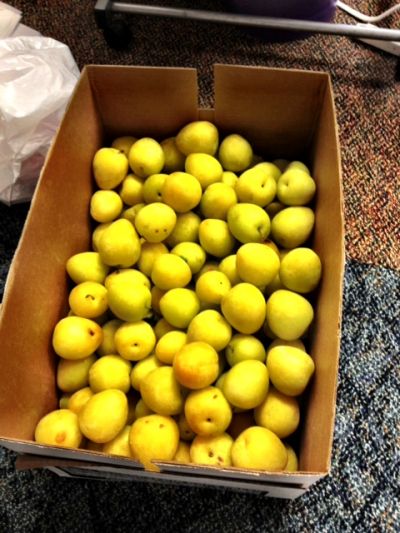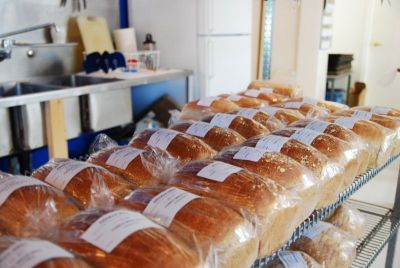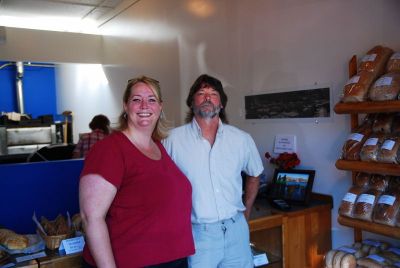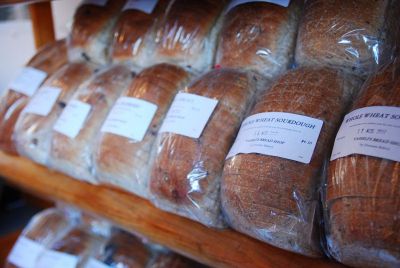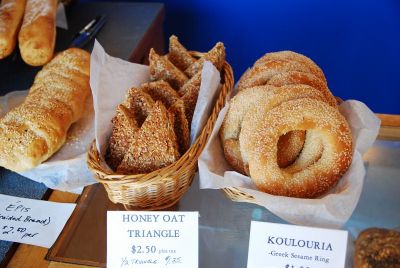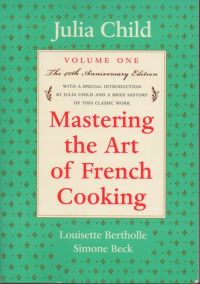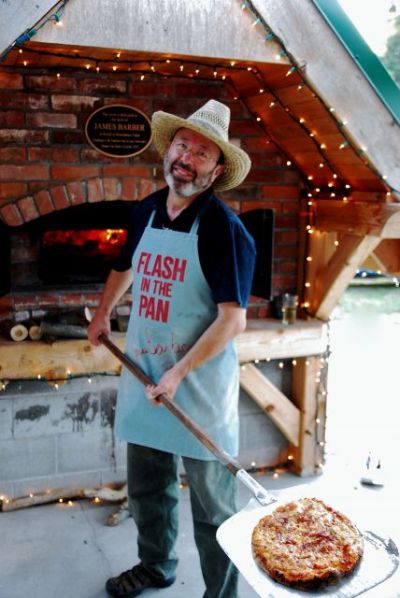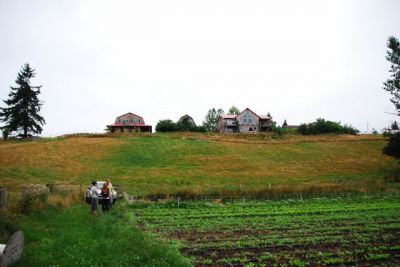If you’re looking for the Feast of Fields contest, scroll to the bottom of this entry.
You can easily spot them this time of year. Trees in your neighbourhood, maybe even in your own backyard, loaded with fruit that may just fall to the ground and rot. But all is not lost. Many Vancouver Island and Sunshine Coast community groups are making sure at least some of that good food is not going to waste and that’s the Food Matters story I told Jo-Ann Roberts today on CBC Radio’s All Points West in Victoria.
A lot of the time the fruit just lies there on the ground. And rotting. And attracting pests, like wasps, or deer, or worse, rats and bears. There are a few reasons for the fruit going to waste. In some cases people simply don’t know what to do with it. There are too many apples or plums to eat all at once, or in the case of a quince tree, for example, since a quince is a fruit you need to cook, you can’t just eat it off the tree. Many people don’t have the time or the knowledge to make use of the fruit. In other cases, the yards are owned by seniors who used to take care of their trees, but they’re no longer up to climbing up ladders or carrying around heavy baskets of fruit or processing 10 pounds of apples into apple sauce.
There are many agencies operating on South Vancouver Island and the Sunshine Coast that have become very good at dealing with unwanted fruit or vegetables. In Victoria, it’s called the Fruit Tree Project, which operates as a part of Lifecycles. Holland Gidney, who is the harvest coordinator, told me the Victoria Fruit Tree project has been around since 1998, and is one of the oldest fruit tree projects in North America; they’re always getting other communities calling to find out how it works…and most of them work like this: You have a tree or trees on your property and you can’t pick or use the fruit. You call or now even register your tree or trees online, and volunteers come to pick the fruit. If you like, they will leave you with one third of it, the volunteers can take one-third for themselves, and the other third is distributed to social agencies that can make use of the fruit like food banks or school breakfast or lunch programs. In Victoria, 25 percent goes to the homeowner, 25 percent to the volunteers, and the other 50 percent goes to Lifecycles. They distribute half of that, then use the rest for their social enterprise program in which they make for sale, products like quince paste and apple cider vinegar. The past few years they’ve been sending some apples and pears to Sea Cider, and a portion of the profits from the sale of those ciders comes back to Lifecycles.
It really is a win-win-win situation…and check out some of these numbers…Lee Sammiya from the Nanaimo Food Share Gleaning Program tells me that since they got going in 2003 they have harvested over 126 thousand pounds of excess fruit and vegetables that would otherwise have been wasted, last year alone they did around 15 thousand pounds. In Victoria last year 36 thousand pounds were harvested, and there are plenty of apples, pears and quince come in this fall.
For some reason the region is going crazy with plums this year. Holland Gidney in Victoria says they have had a ridiculous amount of plums and she’s learned that there are four different kinds of little yellow plums alone. Robin Sturley co-ordinates the FruitSave program run by Cowichan Green Community; she reports lots of plums this year as well but is anticipating her group of volunteers will be picking apples this year right through to November. You have to remember that since so much of this part of the island used to be farmland there are trees that are strewn all around on the old farmland, even some hidden orchards that not too many people know about, like the perry pear orchard found by some folks a few years ago, the fruits of which ended up in a rare perry cider made at Sea Cider.
One upside of this fruit is that since no one is really looking after the fruit trees it means that the fruit hasn’t been treated with any pesticides…so what you see is what you get. The downside of trees that have been ignored is that they probably haven’t been pruned in a very long time. That can not only decrease the yield, but also make it more difficult to pick them. Old cherry and pear trees have a tendency to grow straight up, and bear their fruit at the top of the tree which makes it not only difficult but somewhat dangerous to pick them. The FruitSave program headquartered in Duncan is trying to develop a project this year in which at least some of the trees that are being picked will get some TLC when it comes to their care, and they’re also looking at planting a community orchard as not only a food security project but as a good learning experience for everyone involved.
All three of the people I talked to said they can always use more volunteers to help pick the fruit, this is especially the case in the Cowichan Valley this year. In Victoria they are really looking for people with Bartlett pear trees right now, they would like to get a good supply of those to Sea Cider for pear cider making.
Here are some links to agencies in the region:
LifeCycles Fruit Tree Project, Victoria
LUSH Valley Food Action Society, Comox Valley
Nanaimo Food Share Gleaning, Nanaimo
Cowichan Green Community Fruit Save, Duncan
Skookum Gleaners, Powell River

